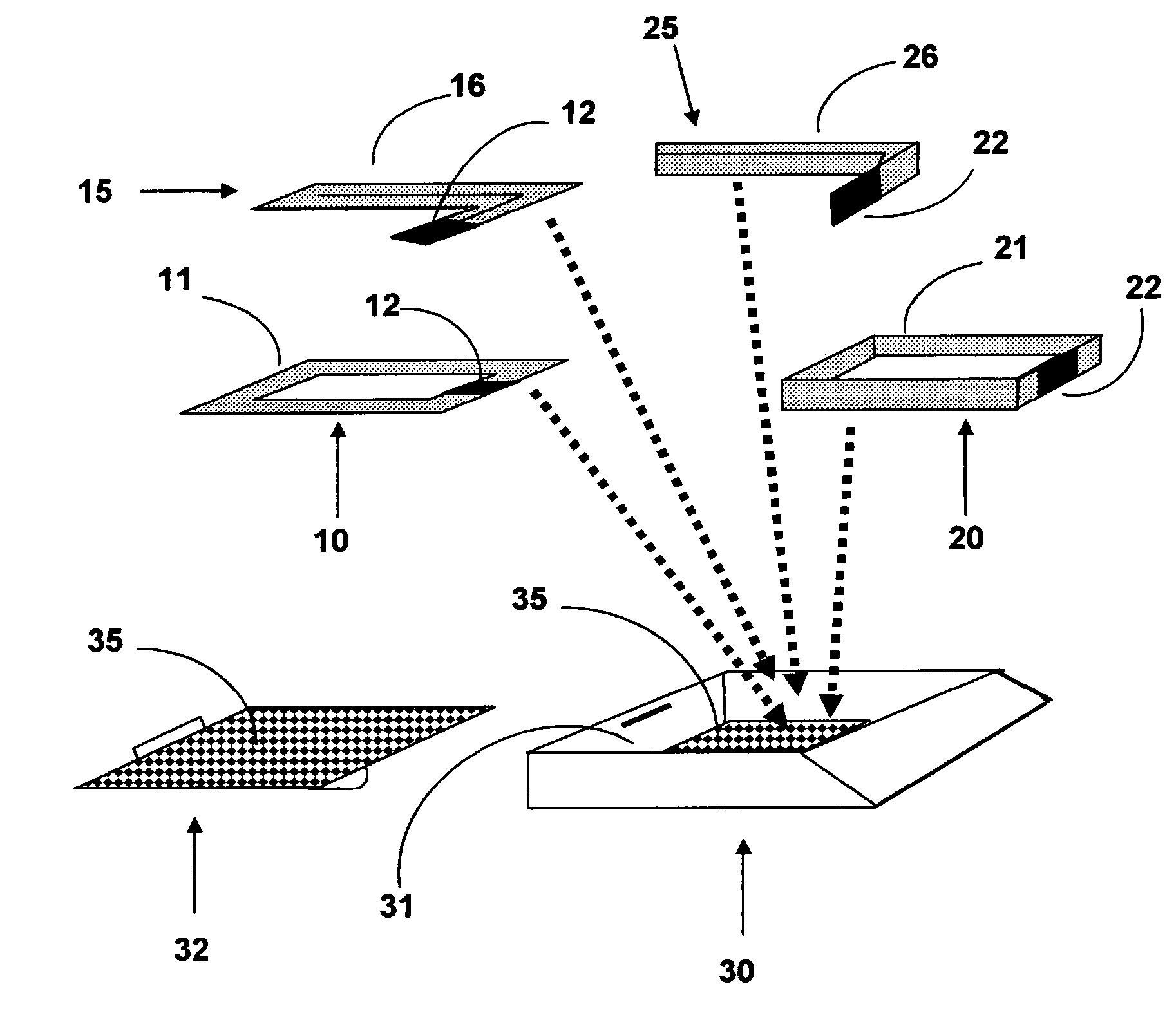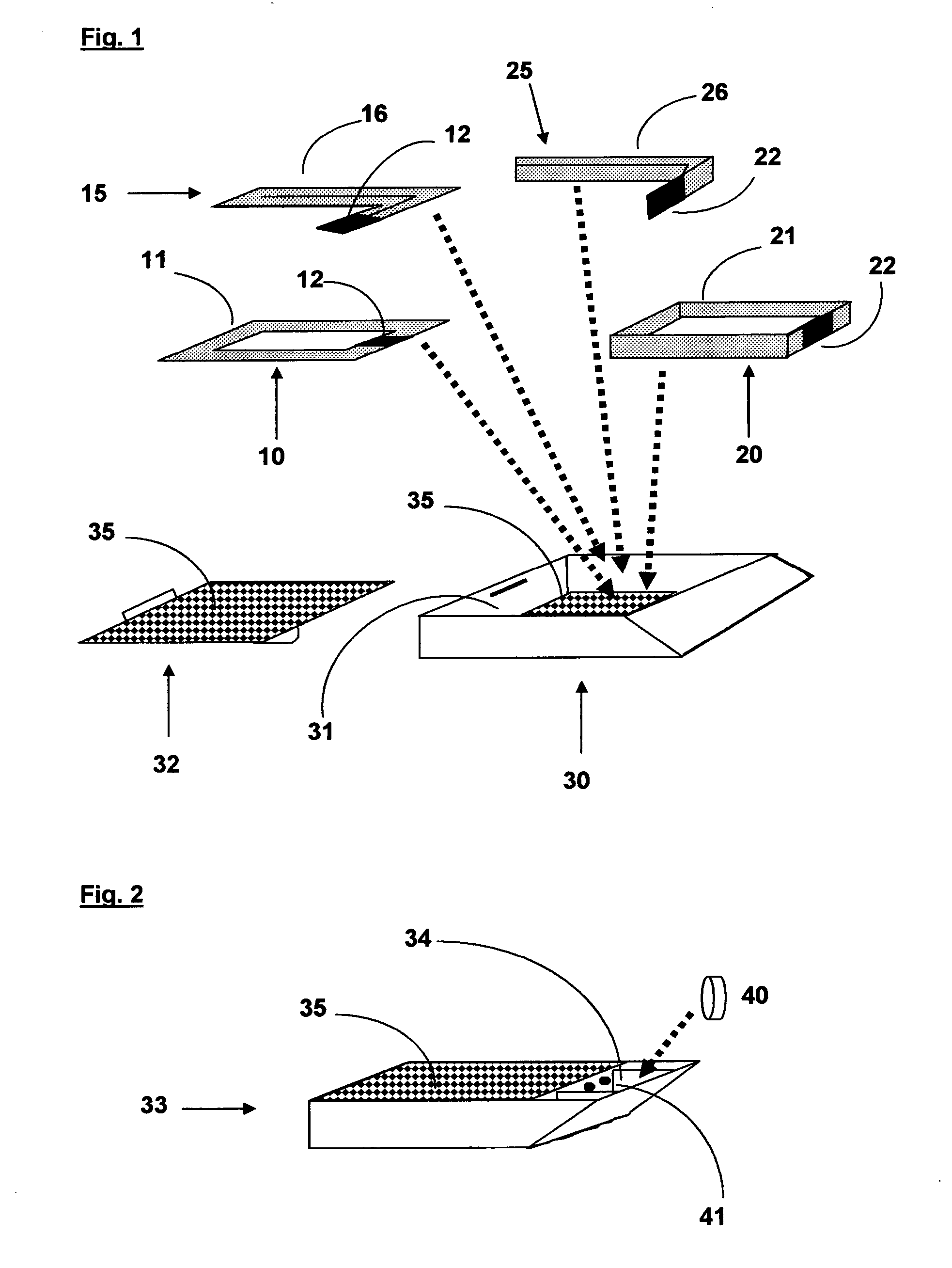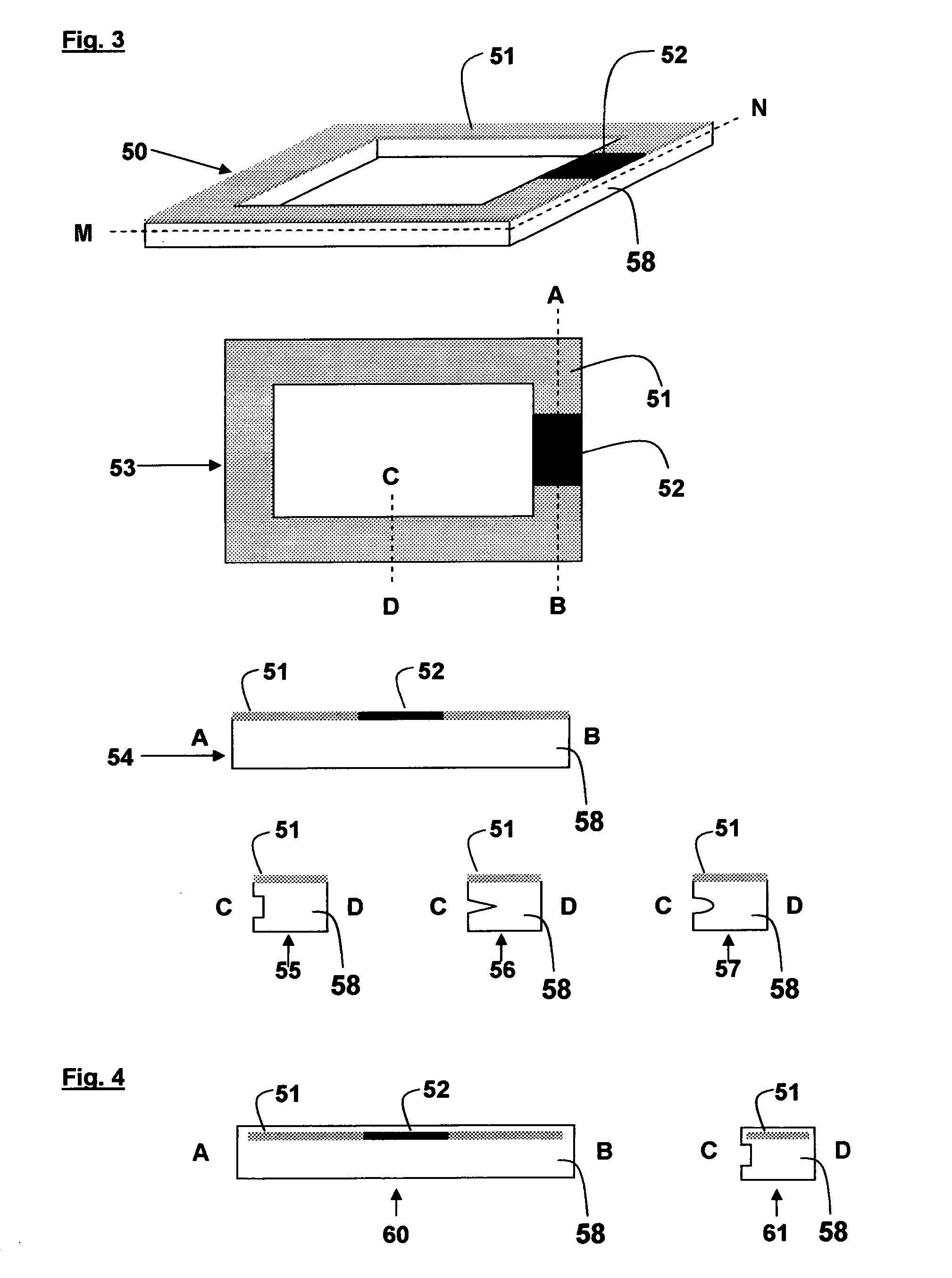Method to turn biological tissue sample cassettes into traceable devices, using a system with inlays tagged with radio frequency indentification (RFID) chips
a biological tissue sample and cassette technology, applied in the direction of anti-theft, special packaging, packaged goods, etc., can solve the problems of electronic parts being destroyed by the electromagnetic field in the microwave oven, the tag cannot be made as small, and the cost is mor
- Summary
- Abstract
- Description
- Claims
- Application Information
AI Technical Summary
Benefits of technology
Problems solved by technology
Method used
Image
Examples
Embodiment Construction
[0024]While the present invention is susceptible of embodiment in other forms, there is shown in the drawings in FIGS. 1-8, and will hereinafter be described, various presently preferred embodiments, with the understanding that the present disclosure is to be considered as exemplifications of the invention, and is not intended to limit the invention to the specific embodiments as illustrated in the figures.
[0025]Furthermore, it should be noted that the drawings in the figures are only schematic representations and that sizes, especially in cross sections, are not exactly proportional and may be intentionally adapted for a better view.
[0026]Although for a number of years now many items in many fields have been tagged with RFID chips, the actual use of such systems in health care is not yet widespread.
[0027]As far as application in the field of pathology is concerned, patent applications were filed for tissue cassettes to which RFID tags would be permanently attached, like the above m...
PUM
| Property | Measurement | Unit |
|---|---|---|
| Length | aaaaa | aaaaa |
| Time | aaaaa | aaaaa |
| Thickness | aaaaa | aaaaa |
Abstract
Description
Claims
Application Information
 Login to View More
Login to View More - R&D
- Intellectual Property
- Life Sciences
- Materials
- Tech Scout
- Unparalleled Data Quality
- Higher Quality Content
- 60% Fewer Hallucinations
Browse by: Latest US Patents, China's latest patents, Technical Efficacy Thesaurus, Application Domain, Technology Topic, Popular Technical Reports.
© 2025 PatSnap. All rights reserved.Legal|Privacy policy|Modern Slavery Act Transparency Statement|Sitemap|About US| Contact US: help@patsnap.com



